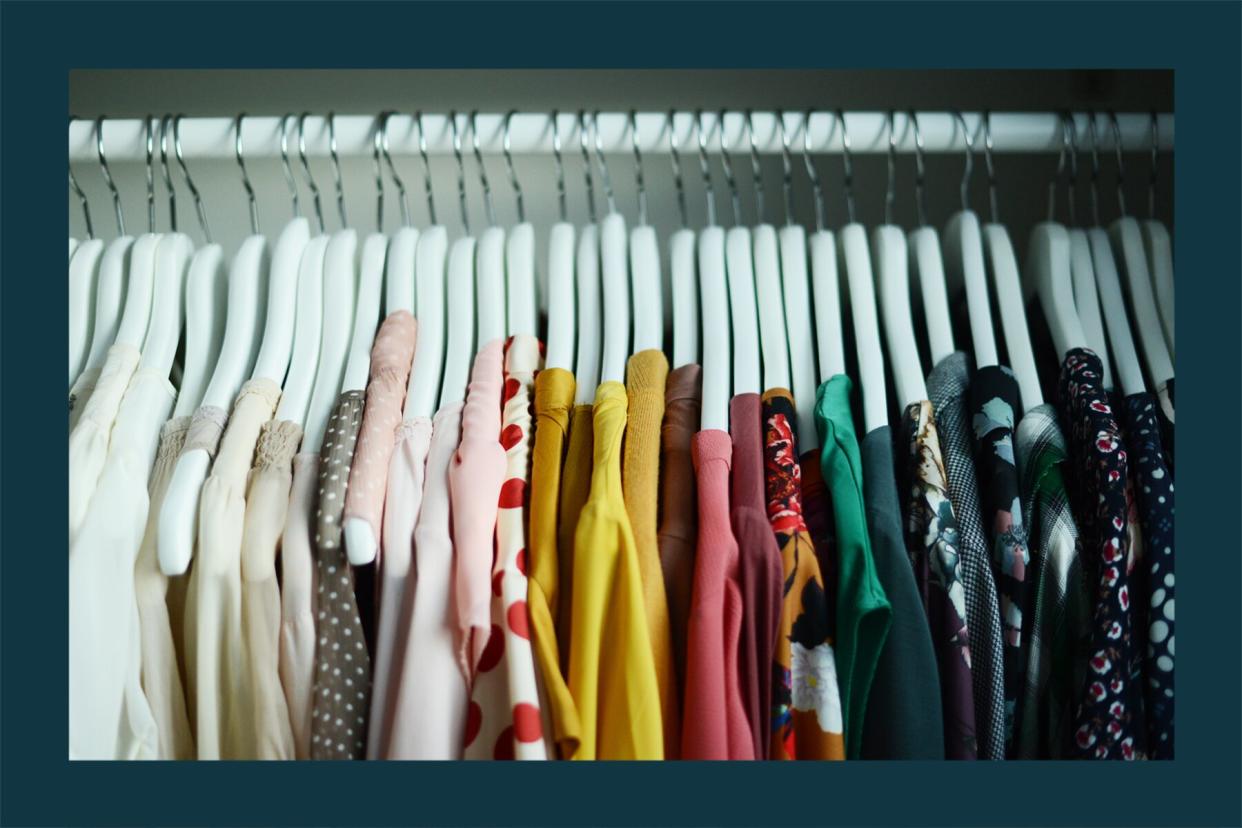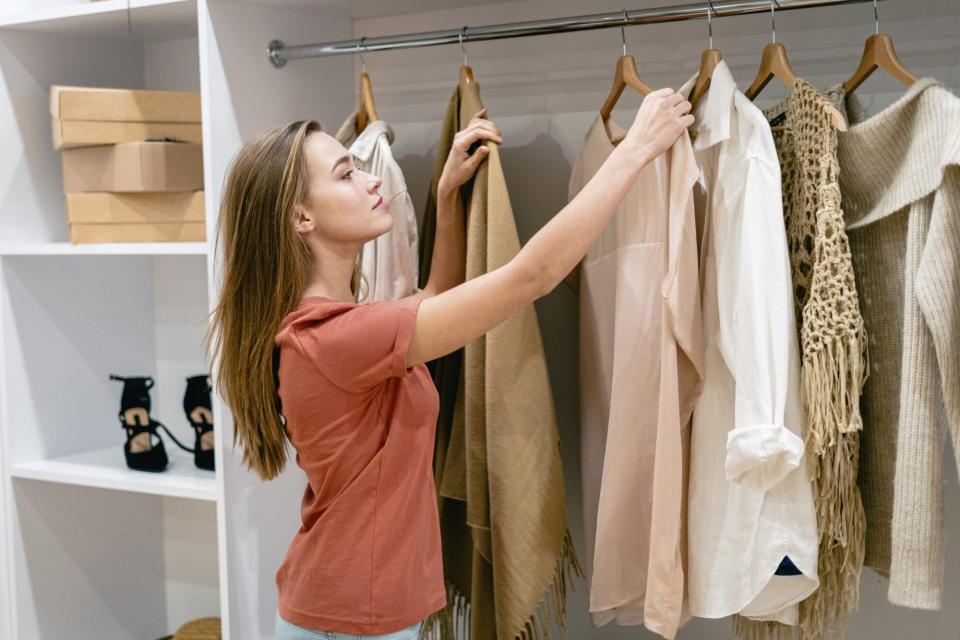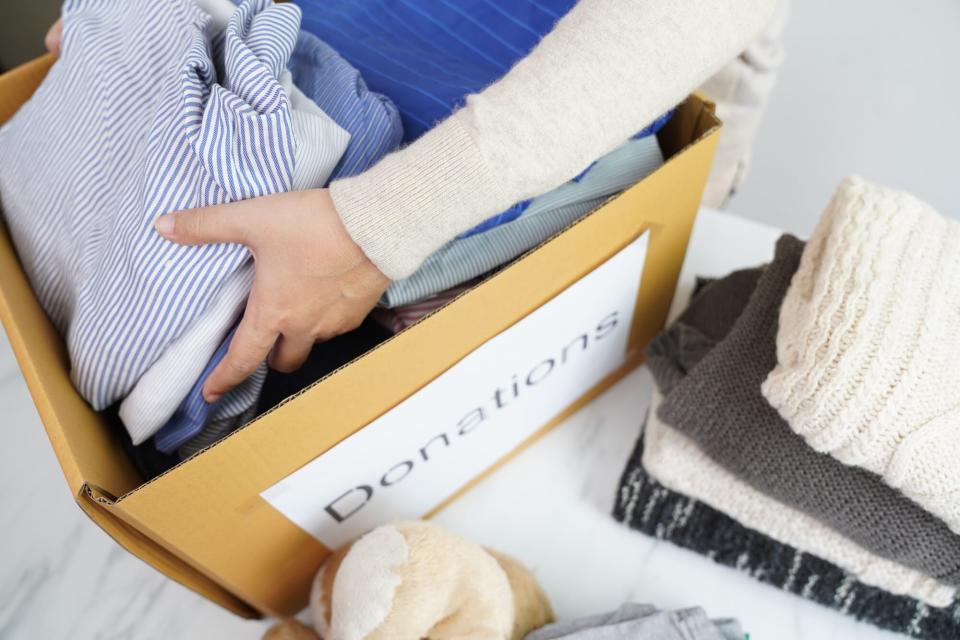Experts Share How to Color-Coordinate Your Closet Like a Pro in 3 Easy Steps

Getty Images
We all love a nice shelfie (you know, those photos you take of your bookshelves or beauty cabinets to show off your cute things), and now it's time to give more appreciation for a good closet picture. Our closets contain our clothes, shoes, and accessories—the stuff that, for many of us, helps us express ourselves and feel confident in our skin. While we can still do all that even when our closets are a jumbled mess, having an organized, color-coordinated closet can make it a lot easier to locate all your favorite items. Not to mention, it'll look great for a photo, too.
Whether you're gearing up for some spring cleaning or you're tired of never being able to find your clothes, we highly recommend giving your closet the color-coordinated treatment. While it's a relatively straightforward task, we tapped organization experts Ashley Murphy and Marissa Hagmeyer, co-founders of NEAT Method, for advice on rearranging our closets in the most practical (and aesthetically pleasing) way.
Keep reading for tips on how to color coordinate your closet like a pro and join us in taking an Insta-worthy closet selfie (we're making it a thing) when you're done.
Step 1: Create the ideal color gradient.
Yes, we probably all learned the order of the rainbow colors in early education, but things can get a little confusing when you're working with multiple different textures, shades, and patterns. So, when color-coding your closet, Murphy suggests arranging clothing in this order: white, pink, red, orange, yellow, green, blue, purple, brown, gray, black. When dealing with patterned clothing, choose the most dominant color and place the item with that color family. If it doesn't look quite right, you can always reassess and put it somewhere else later.

Getty Images
Hagmeyer also notes that you don't need an excess of "color" in your wardrobe to benefit from color-coordinating it. "We often see color themes in closets based on what a client is drawn to and typically purchases—neutrals, bright colors, soft tones," she says. No matter your individual color scheme, you can use the same color order as above and just omit the colors that you don't have.
Step 2: Look at your closet from further away.
Think of your closet like a Monet painting—it might not be as easy to figure it out when you're standing close up. "Sometimes, you need to take a step back to see the bigger picture," Hagmeyer says, referring to the color gradient made from each clothing item. "If an item sticks out, try moving it to another color group to see if it blends better." Repeat the process until you're content with your colorful masterpiece.
Step 3: Use the opportunity to downsize your wardrobe.
Once you've successfully color-coordinated your closet, you'll be better able to take inventory of everything in your wardrobe. "This system helps you analyze what items to part with and what items to add to your shopping list to round things out," Murphy says.
Color-coordinating your closet will help you see what items stick out the most from the rest of your clothing. "If you own all neutrals and have one brightly colored piece, you might want to stop and think if you ever actually wear that item," Hagmeyer says. "If not, then it might be a great time to part with it."

Getty Images
It's the perfect opportunity to cut back your wardrobe to only the items in that color category you wear the most. For example, Murphy asks, "Do you really need 20 white T-shirts?" Odds are, you could probably cut down. Letting go of the things that no longer serve you is not only the premise behind spring cleaning, but it's a great mantra for life, too.

